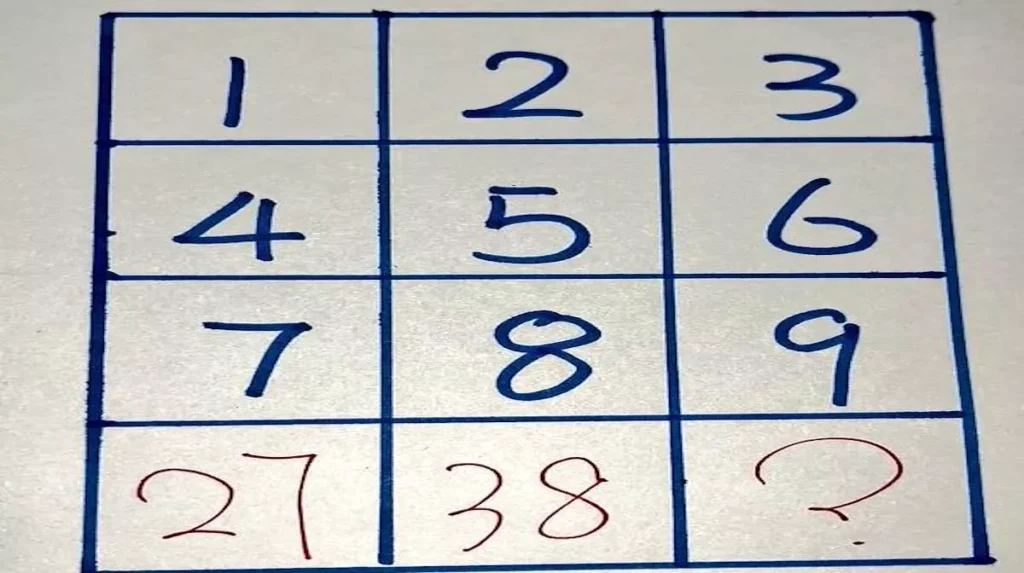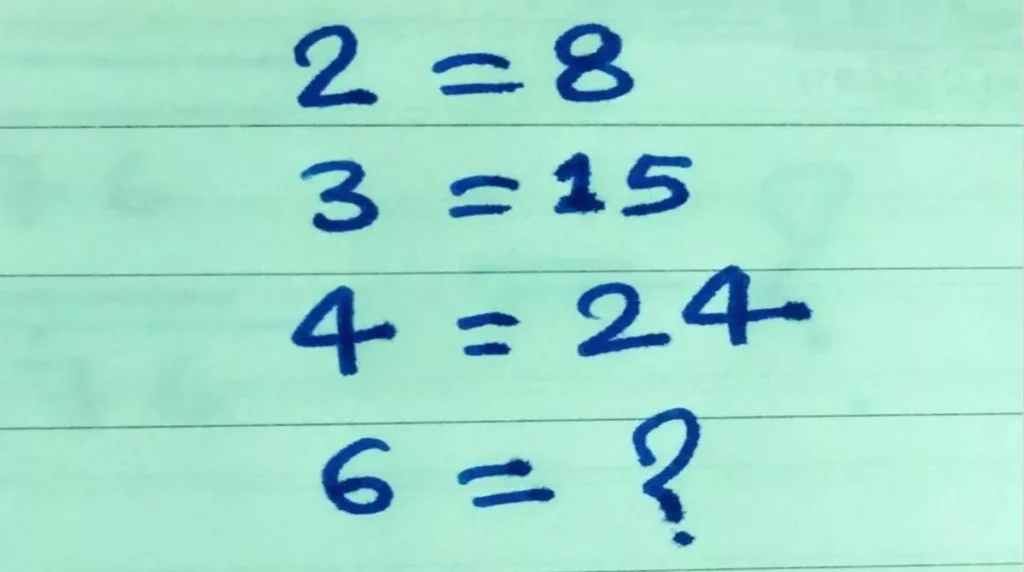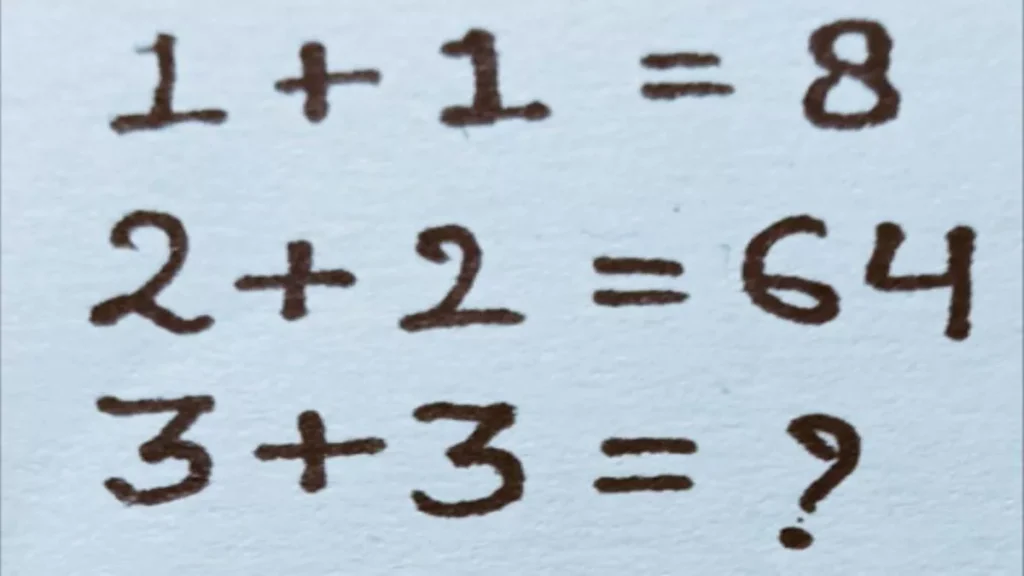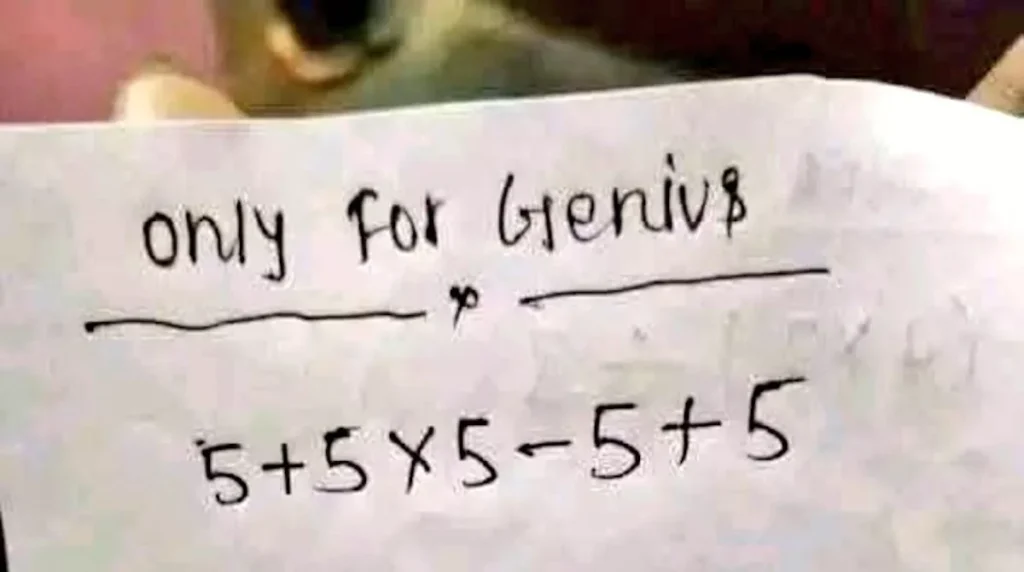A Puzzle That Intrigues the Internet
A mathematical challenge recently shared on social media has sparked curiosity among users due to its surprising logical patterns. Puzzles have always attracted puzzle enthusiasts by combining fun, logic, and observational skills. Whether it’s a tricky riddle or a deceptive mathematical problem, they stimulate the mind and capture attention.
Mathematical riddles, in particular, hold a special place in this enthusiasm. Beneath their apparent simplicity often lie complex mechanisms that require patience, insight, and sharp thinking to solve.
If you enjoy stretching your mental muscles, this new puzzle circulating on the Internet might prove to be quite a challenge.
The Puzzle That Confounded the Internet
A puzzle recently shared on social media has captured the public’s attention for good reason.
Here’s the challenge:
1, 2, 3, 4, 5, 6, 7, 8, 9, 27, 38, ??
At first glance, these numbers may seem illogical. However, it is precisely this type of riddle that encourages thinking outside traditional arithmetic rules to uncover a hidden logic.
While some have quickly found the solution, others still struggle to understand the reasoning behind it.
Another Similarly Confounding Challenge
Another puzzle shared earlier also caused confusion on the Internet:
Once again, one should not expect to apply conventional mathematical rules. These riddles necessitate identifying a clever or even perplexing pattern.
Are you ready to take on the challenge? Dive in, but keep in mind that these puzzles can take longer to solve than they might initially seem.
Why the Internet Loves These Riddles
But what makes these puzzles so popular? The answer is simple: they immediately grab attention, stimulate the intellect, and provide a sense of satisfaction once solved.
In a world where content scrolls by at a rapid pace, these riddles offer a short, engaging, and stimulating format for the mind.
Moreover, they spark discussions, debates, and a collective curiosity, making them especially appealing on social media.
In summary, they create a perfect blend of personal challenge and shared enjoyment.
Here’s The Solution We Found
Step 1: Observe the Sequence
We have the following numbers:
1, 2, 3, 4, 5, 6, 7, 8, 9 —> These are the digits from 1 to 9, a simple arithmetic sequence with a step of 1.
Then we have:
27, 38 —> Here, we notice a shift in pace. These are no longer simple increments.
Step 2: Study the Transition
9 → 27:
27 – 9 = 18
27 → 38:
38 – 27 = 11
So, after the simple numbers (1 to 9), the sequence seems to change logic.
Step 3: Examine the Differences
- Difference from 9 to 27 = +18
- Difference from 27 to 38 = +11
Thus:
- Next possible difference = ??
We notice that 18 → 11 represents a decrease of 7.
If we continue this decrease of 7, the next difference would be:
11 – 7 = 4
Step 4: Calculate the Next Term
38 + 4 = 42
Conclusion:
The missing term is 42.
And remember, if you don’t want to continue enjoying tests and challenges, definitely don’t click here.







